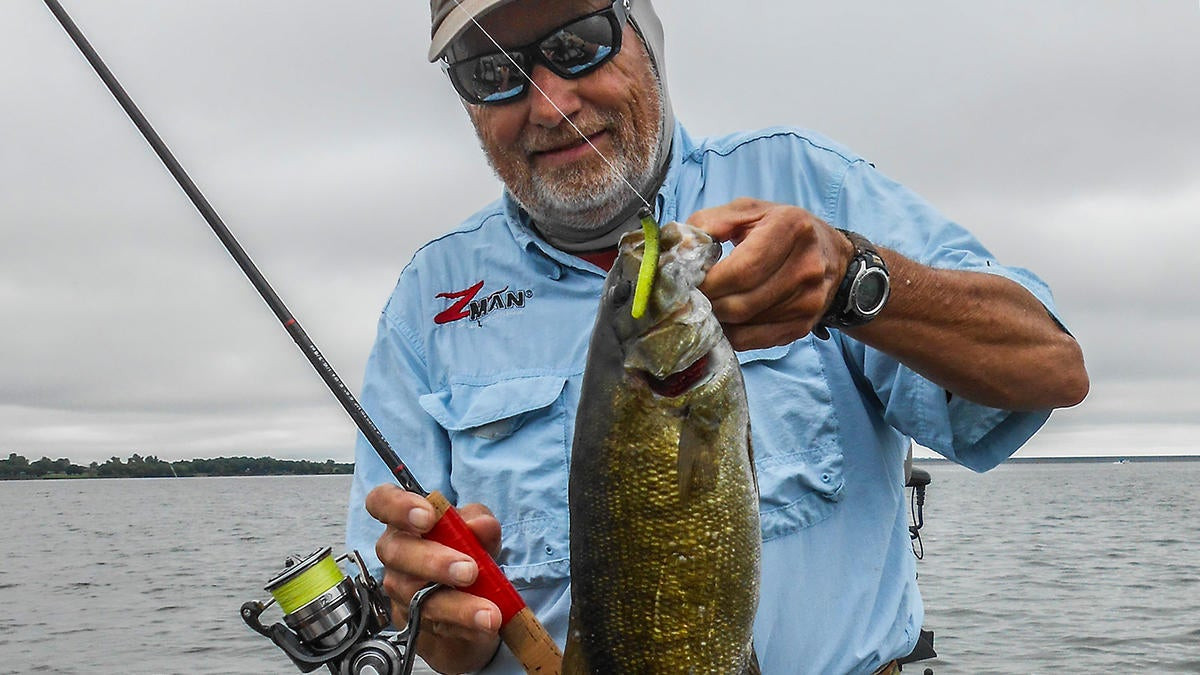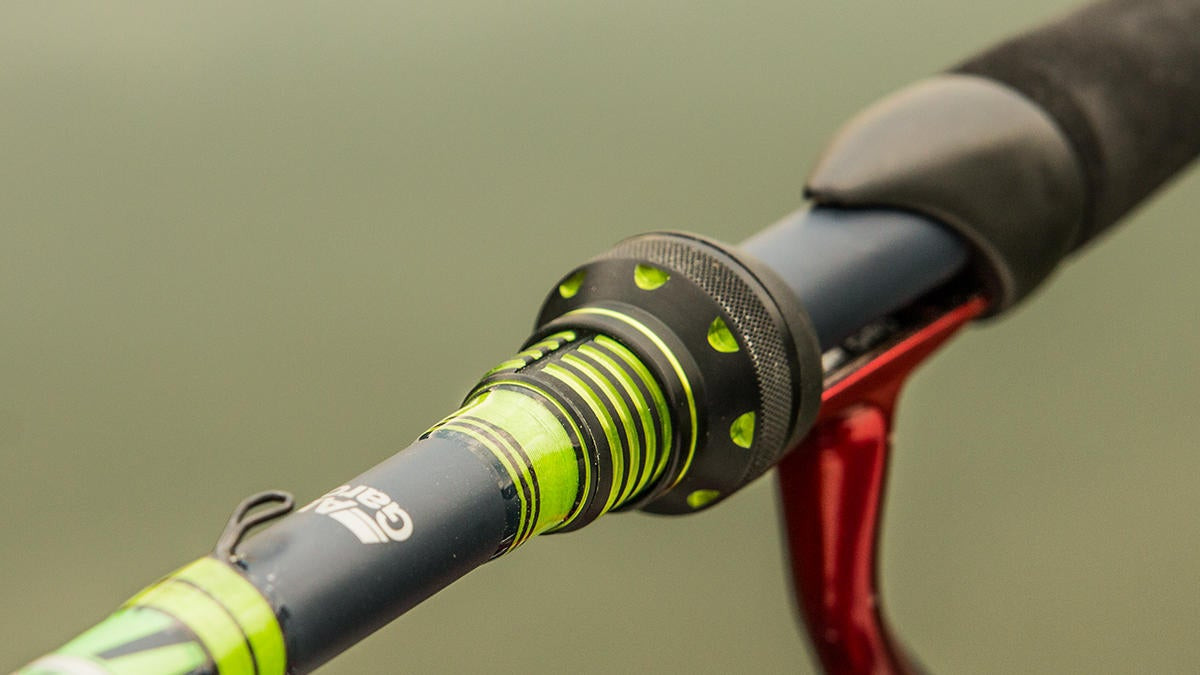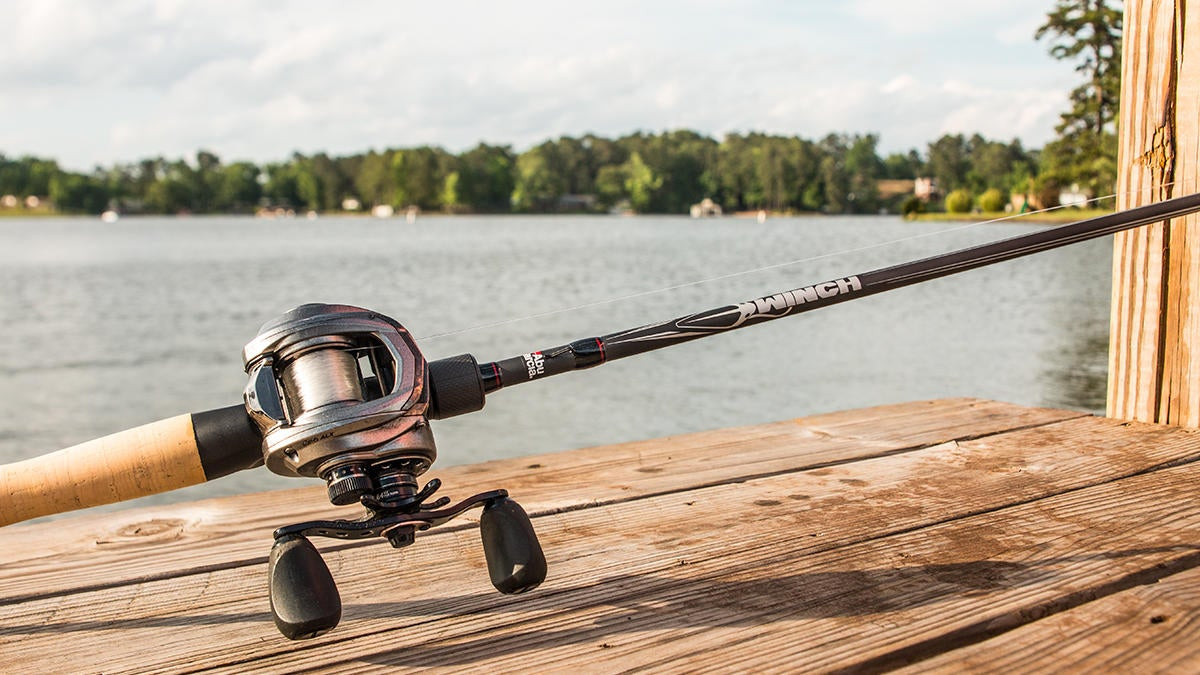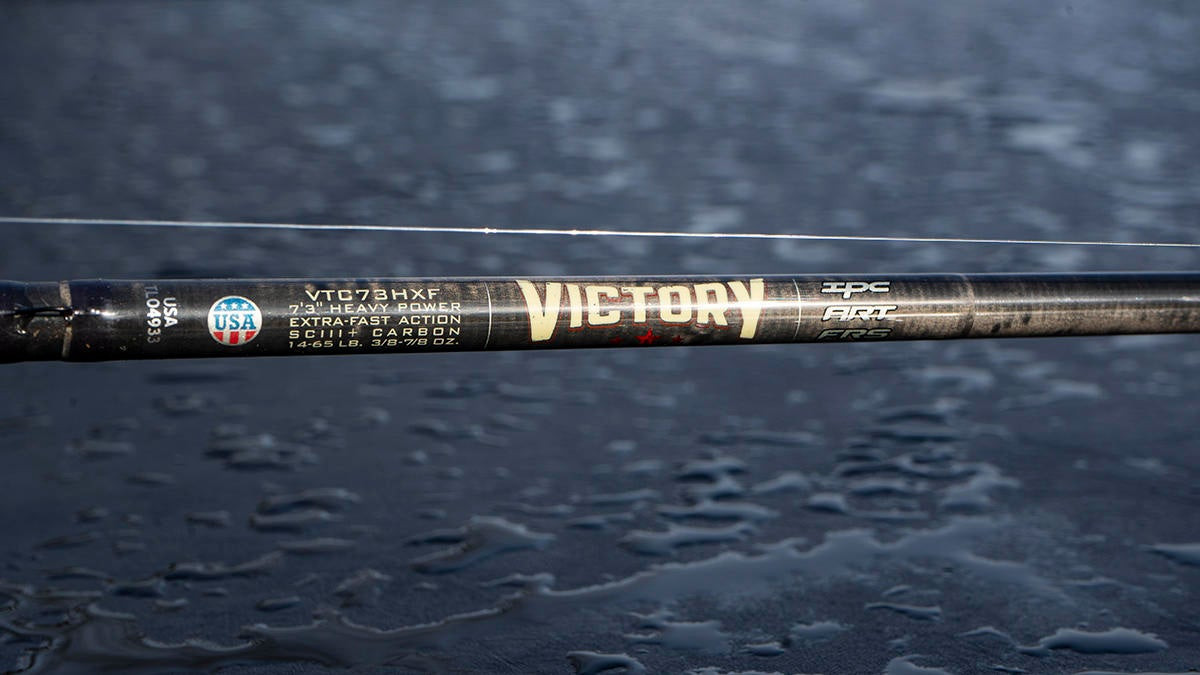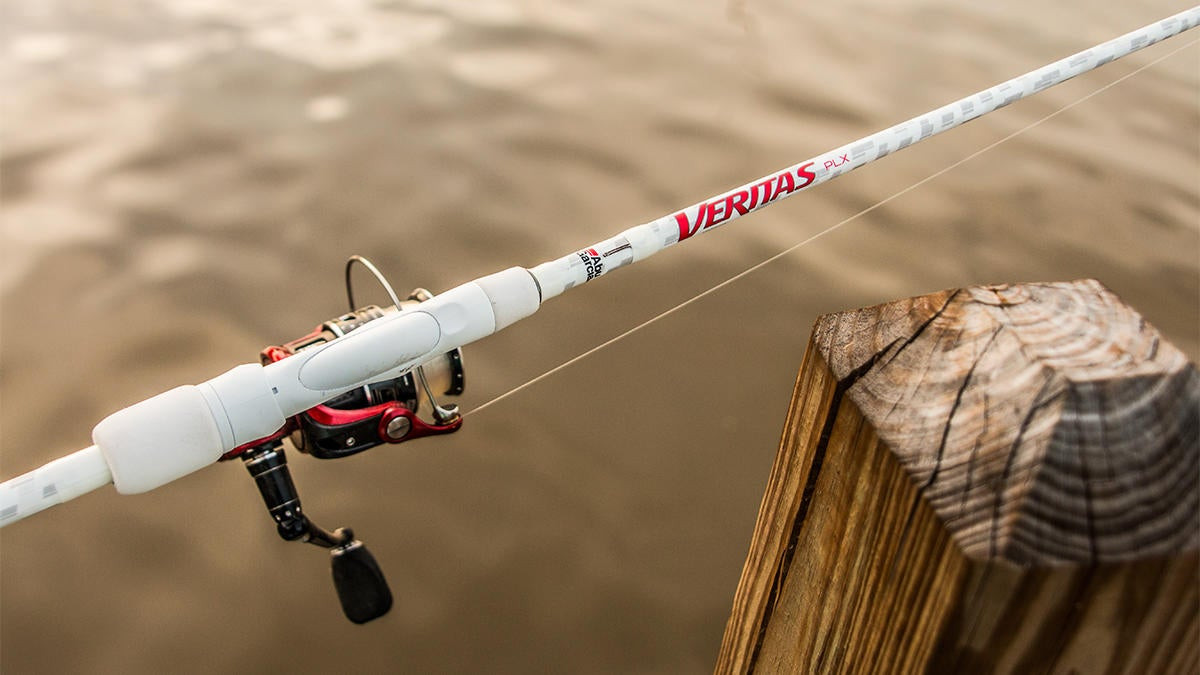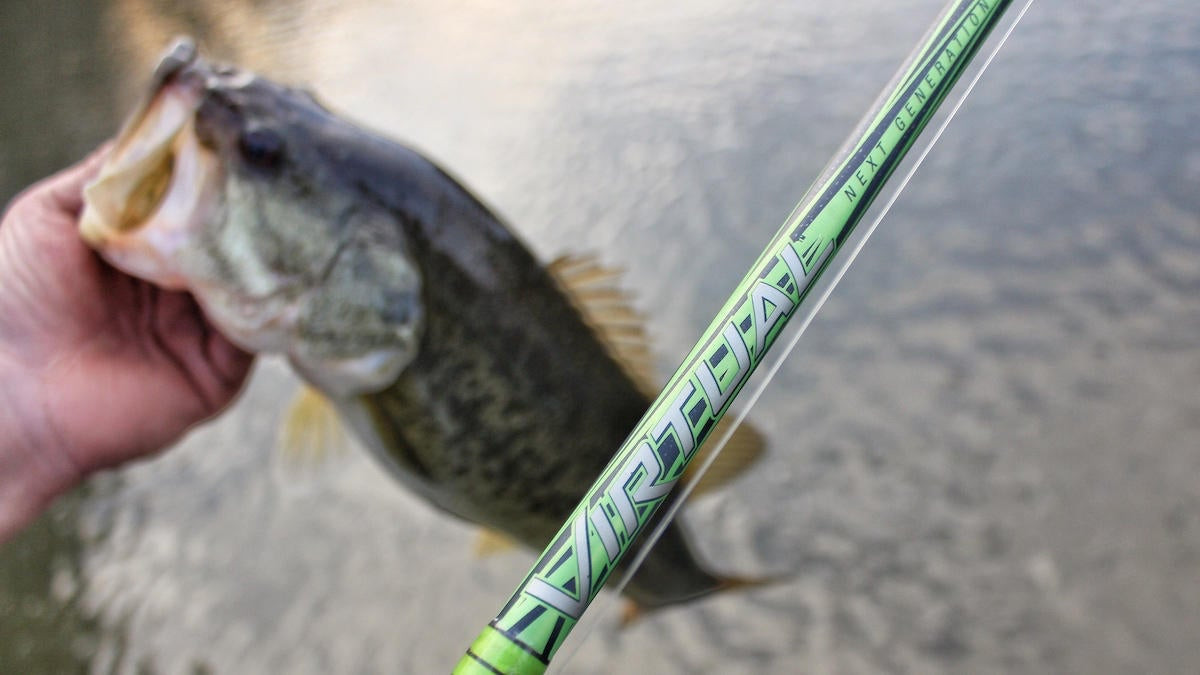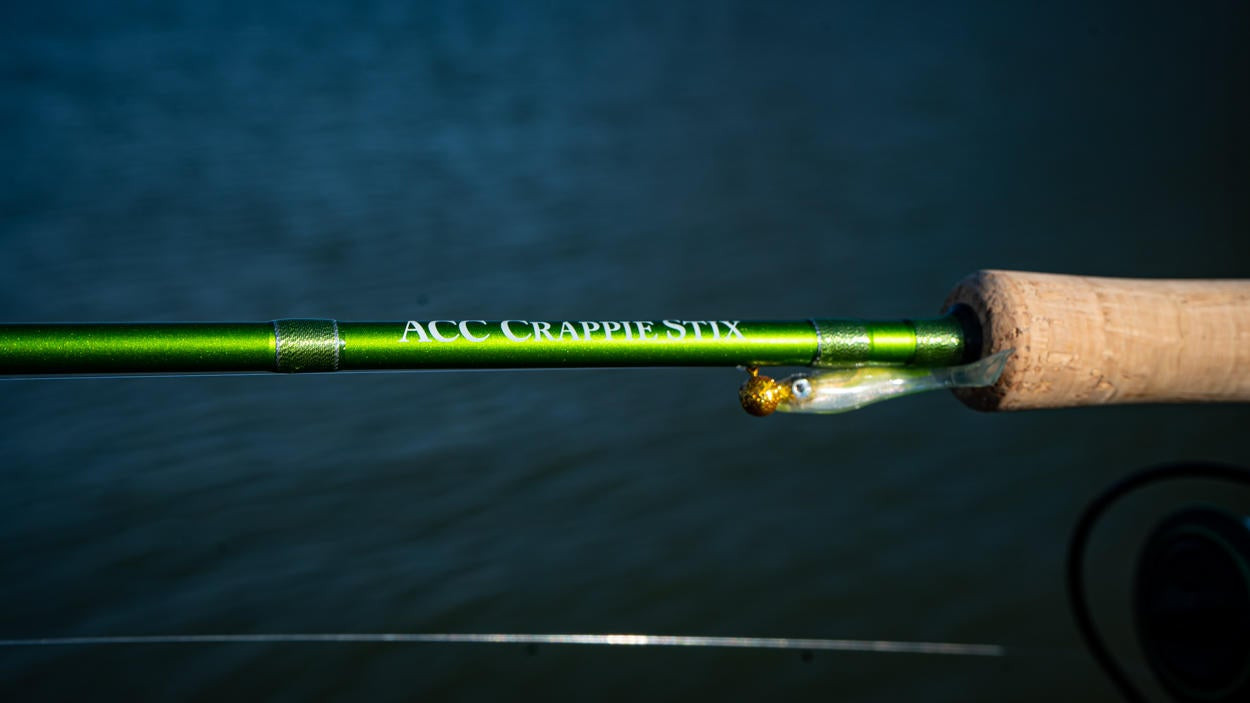Short spinning rods have played a vital role in the development of Midwest finesse bass fishing from the get-go.
Much of the genesis of this great piscatorial method and tools began at Ray Fincke’s tackle shop on Southwest Boulevard in the Rosedale neighborhood of Kansas City, Kansas, in the 1960s.
At the age of 16, Ray inherited the shop when his father, Louis, unexpectedly died in 1952. The tackle shop began in the 1930s in the office of his father’s hardware store, and it catered primarily to fly fishermen.
In 1960, a serendipitous event occurred that has a magnificent effect on the angling world for the next 61 years, and it is likely to continue for many more years.
It began when Ray Fincke built and moved into a house next door to Drew Reese’s family. What’s more, Drew’s father was the proprietor of an automobile dealership on Southwest Boulevard near Ray’s tackle shop, and Ray’s wife worked for Drew’s father at the automobile dealership. At that time, Drew was 13 years old and joyously afflicted with fishing fever, and his father encouraged him to talk to Ray about fishing. After that initial conversation, Ray and Drew became devoted friends, and at the age of 13, Drew began tying flies for the tackle shop. Throughout his high-school years and until he graduated from the University of Kansas in 1969, Drew worked part-time at Fincke’s shop.
From Ray, Drew learned a lot about the art and some of the science of making fishing rods – especially spinning rods. This, of course, occurred many years before spinning rods began to play a significant role in the repertoire of the vast majority of black-bass anglers in the United States and Canada.
Drew’s first fishing trip with Ray occurred in 1961. Ray took Drew and his father to fish for rainbow trout at Lake Tanyecomo’s tailrace below Table Rock Lake’s dam. Ray provided them with two very inexpensive buggy-whip spinning rods and Compac spinning reels that were spooled with four-pound-test monofilament line. To each of the lines, Ray affixed a split shot and a wooly-worm fly that Drew had created. To their delight and amazement, Drew and his father caught more than 100 trout, and Drew’s lifetime passion for finesse fishing was lit. Then 10 years later, he used his Midwest finesse tactics to compete at the first BASS Master Classic at Lake Mead, Nevada, where he finished in seventh place, using six-pound-test line.
As the 1960s unfolded, the clientele at Ray’s tackle shop expanded, and it became a gathering spot for all sorts of anglers. On Monday nights, it was a quasi-bass club before the advent of bass clubs and organizations like Bass Anglers Sportsman Society. It was where the great and late Chuck Woods, who created the Beetle, Beetle Spin, and Puddle Jumper, would often be fiddling with lures and try to create new ones. And Ray began creating an array of rods and selling tackle for the black-bass anglers to use.
Besides Drew Reese, all of those goings-on at Ray’s shop in the 1960s also caught the attention of another high school and college student. It was Dwight Keefer, who eventually used one of Fincke’s rods and some of Woods’ lures to win the World Series of Sport Fishing at Long Lake, Wisconsin, in 1967. Keefer also competed in the BASS Master Classic at Percy Priest Reservoir, Tennessee, in 1972.
From the 1950s until his death on Mar. 21, 2011, Ray Fincke built and repaired scores of casting, fly, and spinning rods for area anglers. He was regularly lauded for his genius at rebuilding or restoring bamboo fly rods. His most renowned creation was a 5-foot, 4-inch finesse spinning rod that he called the Stinger. It was made from two blanks. One was a fiberglass blank that was 19 inches long. The other one was an ultra-light graphite blank that was four-feet, six inches long. To lengthen the rod and add more power to the butt section, Fincke slid the 19-inch piece of the fiberglass blank over the graphite blank and firmly glued the blanks together, and then he used wrapping thread to decoratively cover the union of the two blanks. The butt of the rod was fitted with a nine-inch cork handle. This rod sported five stainless steel guides: a No. 25, No. 16, No. 12, and No. 10. The tip was a No. 8 Carboloy.
Ultimately, Fincke’s influence on finesse fishing expanded across the entire nation when he helped Gary Loomis design the 5-foot, 4-inch and 5-foot, 10-inch Classic Spin Jig rods in 1981 and 1982. In essence, these two rods were similar to Fincke’s Stinger. They became the G. Loomis SJ 6400 and SJ 700 rods, which were described as possessing an extra-fast action with a magnum-light rod power. They were ideal rods for wielding small marabou or hair jigs, Beetles, Beetle Spins, and jig-worms.
Drew Reese became wedded to the SJ 6400 and SJ 700 in 1982, and across those many years of using those rods, he became one of the world’s finest practitioner of Midwest finesse fishing, which he prefers to call light-line fishing.
Nowadays, Reese, who is 74 years old, lives in rural northeastern Kansas near the town of Rantoul. And except during the Covid-19 pandemic and lockdown, he has spent a lot of his days chasing smallmouth bass that abide in the Lake of the Woods in Ontario, Canada, Lake Erie, and Bull Shoals Lake in Arkansas. Since 2011, he has played a role in persuading Z-Man Fishing Products to manufacture a jighead and several soft-plastic baits for Midwest finesse applications.
After Gary Loomis sold his company to Shimano in 1995, the availability of the SJ 6400 and SJ 700 rod blanks gradually came to an end. But it wasn’t until the spring of 2021 that Drew began searching the Internet in hopes of finding similar rod blanks. But because the modern-day angling world is enamored (for some unenlightened or benighted reason) with long rods, it was a chore to find a blank that was less than 6 feet long.
Eventually, he talked several times to the head of the product development department at Mud Hole Custom Tackle of Ovieda, Fla., which became grand and rewarding conversations.
The folks at Mud Hole thought they could help him find a sequel to his G. Loomis rods, and to help them with this task, Drew shipped them a SJ 6400, which allowed them to search through Mud Hole’s inventory and use a deflection graph to compare their blanks to Drew’s SJ 640. Eventually, they found a blank that possesses nearly the same action and power of Drew’s Loomis rod. It is Mud Hole’s MHX NEPS78LMF Elite Pro Rod blank. It is described as having a light power rating and a moderate-fast action. But it is 6 feet, 6 inches long or 8 inches longer than the SJ 700 and 14 inches longer than the SJ 6400.
According to Mud Hole’s deflection graph, Drew could easily create a sequel to the SJ 700 with the MHX NEPS78LMF Elite Pro Rod by removing eight inches from its butt end, and he could also remove 14 inches from its butt end to create a sequel to the SJ 6400 of the blank.
In hopes of custom-building rods that would replicate the SJ 6400 and SJ 700 rods that he had used for decades, Drew purchased several MHX NEPS78LMF Elite Pro Rod blanks.
After he removed eight inches from the butt of one of the Mud Hole blank, making it 5 feet, 10 inches long, he affixed an 11-inch cork handle to the shortened blank. Then after he removed 14 inches from the butt of the other Mud Hole blank, making it 5 feet, 4 inches long, he affixed a 9-inch cork handle to the butt of this blank. These cork handles are often called Tennessee handles.
He adorned each rod with a series of CRB SSR Concept Style Spinning Guides.
The 5-foot, 4-inch rod has five guides, and the sizes of the guides are 6, 8, 10, 12 and 20. Its first guide is a 20, and it is situated 17 1/2 inches from the tip of the spool of the spinning reel.
The 5-foot, 10-inch rod has six guides, and the sizes of the guides are 6, 8, 10, 12, 16, and 25. The first guide is a 25 and it is situated 18 1/2 inches from the tip of the spool of the spinning reel.
When he finished assembling these rods and compared them to the SJ 6400 and SJ 700 rods, he sensed immediately that the Mud Hole renditions are significantly superior to the G. Loomis renditions.
These state-of-the-art spinning rods from Mud Hole are almost as light as the proverbial feather. The 5-foot, 4-inch model weighs 1.4 ounces and the 5-foot, 10-inch model weighs 1.8 ounces. They possess a slightly quicker action than his old SJ 6400 and SJ 700 rods, which facilitates casting, sense of feel and hook setting. What’s more, they are powerful enough to subdue hefty and tetchy smallmouth bass and an array of other bulky and somewhat cantankerous species.
Not only is it easy to cast and hook a smallmouth bass with these new rods, Drew has discovered that it is easier to land a feisty smallmouth bass with these short rods than it is with the long rods that the vast majority of recreational and tournament anglers use.
Drew used red Vintage Scotch Brand 3M Plastic Tape to affix a top-of-the-line Daiwa 1000 spinning reel to the cork handle of the 5-foot, 4-inch rod. He tapped a top-of-the-line Daiwa 2500 spinning reel to the handle of the 5-foot, 10-inch rod.
Each reel was spooled with 4-pound test Berkley FireLine Fused Fishing Line in a flame-green hue. He used a Seaguar knot to attach a 9-foot leader that was made with 6-pound Seaguar Red Label Fluorocarbon fishing line.
When he executed his first casts with these rods, he was rather surprised by how far and easily he could cast a standard Midwest finesse rig, such as a Z-Man Fishing Products’ Finesse TRD or TRD TicklerZ affixed to a 1/15- or 1/10-ounce Z-Man’s Finesse ShroomZ Jig. What’s more, he was elated by how delicately and effectively he could retrieve these Midwest finesse rigs across a variety of different underwater terrains.
In Drew’s hands, Mud Hole’s rods have become a delightful and elegant continuation of the grand tradition that Ray Fincke and Chuck Woods spawned five decades ago.
Drew is eternally grateful for all of Ray’s and Chuck’s contributions. He is continuously thankful for the many times that Chuck Woods took him fishing. In Drew’s eyes and memories, Ray was virtually an archangel; he would give you the shirt off of his back; and to this day, Drew thinks of Ray as a member of his family.
Now, Drew hopes today’s anglers will discover the joy and manifold virtues of wielding these two short rods with an array of Midwest finesse rigs.
When these rods are used with 4- and 6-pound test braided line, they are tremendously fun to use.
(1 of 1)
The History and Evolution of the “Tennessee Handle” for Bass Fishing Rods
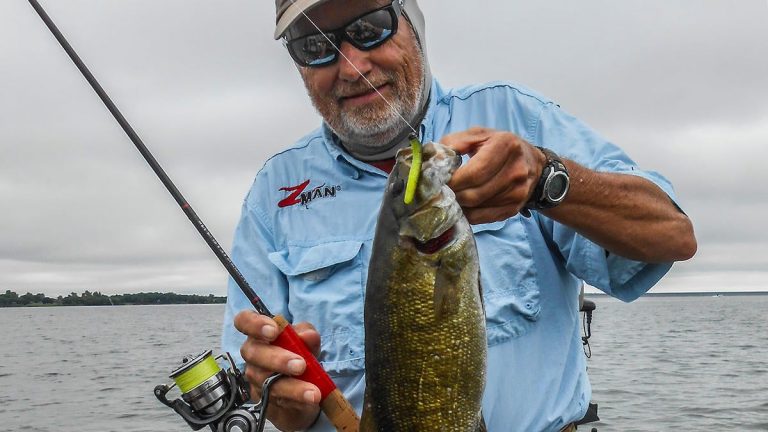
Short spinning rods have played a vital role in the development of Midwest finesse bass fishing from the get-go.
Much of the genesis of this great piscatorial method and tools began at Ray Fincke’s tackle shop on Southwest Boulevard in the Rosedale neighborhood of Kansas City, Kansas, in the 1960s.
At the age of 16, Ray inherited the shop when his father, Louis, unexpectedly died in 1952. The tackle shop began in the 1930s in the office of his father’s hardware store, and it catered primarily to fly fishermen.
In 1960, a serendipitous event occurred that has a magnificent effect on the angling world for the next 61 years, and it is likely to continue for many more years.
It began when Ray Fincke built and moved into a house next door to Drew Reese’s family. What’s more, Drew’s father was the proprietor of an automobile dealership on Southwest Boulevard near Ray’s tackle shop, and Ray’s wife worked for Drew’s father at the automobile dealership. At that time, Drew was 13 years old and joyously afflicted with fishing fever, and his father encouraged him to talk to Ray about fishing. After that initial conversation, Ray and Drew became devoted friends, and at the age of 13, Drew began tying flies for the tackle shop. Throughout his high-school years and until he graduated from the University of Kansas in 1969, Drew worked part-time at Fincke’s shop.
From Ray, Drew learned a lot about the art and some of the science of making fishing rods – especially spinning rods. This, of course, occurred many years before spinning rods began to play a significant role in the repertoire of the vast majority of black-bass anglers in the United States and Canada.
Drew’s first fishing trip with Ray occurred in 1961. Ray took Drew and his father to fish for rainbow trout at Lake Tanyecomo’s tailrace below Table Rock Lake’s dam. Ray provided them with two very inexpensive buggy-whip spinning rods and Compac spinning reels that were spooled with four-pound-test monofilament line. To each of the lines, Ray affixed a split shot and a wooly-worm fly that Drew had created. To their delight and amazement, Drew and his father caught more than 100 trout, and Drew’s lifetime passion for finesse fishing was lit. Then 10 years later, he used his Midwest finesse tactics to compete at the first BASS Master Classic at Lake Mead, Nevada, where he finished in seventh place, using six-pound-test line.
As the 1960s unfolded, the clientele at Ray’s tackle shop expanded, and it became a gathering spot for all sorts of anglers. On Monday nights, it was a quasi-bass club before the advent of bass clubs and organizations like Bass Anglers Sportsman Society. It was where the great and late Chuck Woods, who created the Beetle, Beetle Spin, and Puddle Jumper, would often be fiddling with lures and try to create new ones. And Ray began creating an array of rods and selling tackle for the black-bass anglers to use.
Besides Drew Reese, all of those goings-on at Ray’s shop in the 1960s also caught the attention of another high school and college student. It was Dwight Keefer, who eventually used one of Fincke’s rods and some of Woods’ lures to win the World Series of Sport Fishing at Long Lake, Wisconsin, in 1967. Keefer also competed in the BASS Master Classic at Percy Priest Reservoir, Tennessee, in 1972.
From the 1950s until his death on Mar. 21, 2011, Ray Fincke built and repaired scores of casting, fly, and spinning rods for area anglers. He was regularly lauded for his genius at rebuilding or restoring bamboo fly rods. His most renowned creation was a 5-foot, 4-inch finesse spinning rod that he called the Stinger. It was made from two blanks. One was a fiberglass blank that was 19 inches long. The other one was an ultra-light graphite blank that was four-feet, six inches long. To lengthen the rod and add more power to the butt section, Fincke slid the 19-inch piece of the fiberglass blank over the graphite blank and firmly glued the blanks together, and then he used wrapping thread to decoratively cover the union of the two blanks. The butt of the rod was fitted with a nine-inch cork handle. This rod sported five stainless steel guides: a No. 25, No. 16, No. 12, and No. 10. The tip was a No. 8 Carboloy.
Ultimately, Fincke’s influence on finesse fishing expanded across the entire nation when he helped Gary Loomis design the 5-foot, 4-inch and 5-foot, 10-inch Classic Spin Jig rods in 1981 and 1982. In essence, these two rods were similar to Fincke’s Stinger. They became the G. Loomis SJ 6400 and SJ 700 rods, which were described as possessing an extra-fast action with a magnum-light rod power. They were ideal rods for wielding small marabou or hair jigs, Beetles, Beetle Spins, and jig-worms.
Drew Reese became wedded to the SJ 6400 and SJ 700 in 1982, and across those many years of using those rods, he became one of the world’s finest practitioner of Midwest finesse fishing, which he prefers to call light-line fishing.
Nowadays, Reese, who is 74 years old, lives in rural northeastern Kansas near the town of Rantoul. And except during the Covid-19 pandemic and lockdown, he has spent a lot of his days chasing smallmouth bass that abide in the Lake of the Woods in Ontario, Canada, Lake Erie, and Bull Shoals Lake in Arkansas. Since 2011, he has played a role in persuading Z-Man Fishing Products to manufacture a jighead and several soft-plastic baits for Midwest finesse applications.
After Gary Loomis sold his company to Shimano in 1995, the availability of the SJ 6400 and SJ 700 rod blanks gradually came to an end. But it wasn’t until the spring of 2021 that Drew began searching the Internet in hopes of finding similar rod blanks. But because the modern-day angling world is enamored (for some unenlightened or benighted reason) with long rods, it was a chore to find a blank that was less than 6 feet long.
Eventually, he talked several times to the head of the product development department at Mud Hole Custom Tackle of Ovieda, Fla., which became grand and rewarding conversations.
The folks at Mud Hole thought they could help him find a sequel to his G. Loomis rods, and to help them with this task, Drew shipped them a SJ 6400, which allowed them to search through Mud Hole’s inventory and use a deflection graph to compare their blanks to Drew’s SJ 640. Eventually, they found a blank that possesses nearly the same action and power of Drew’s Loomis rod. It is Mud Hole’s MHX NEPS78LMF Elite Pro Rod blank. It is described as having a light power rating and a moderate-fast action. But it is 6 feet, 6 inches long or 8 inches longer than the SJ 700 and 14 inches longer than the SJ 6400.
According to Mud Hole’s deflection graph, Drew could easily create a sequel to the SJ 700 with the MHX NEPS78LMF Elite Pro Rod by removing eight inches from its butt end, and he could also remove 14 inches from its butt end to create a sequel to the SJ 6400 of the blank.
In hopes of custom-building rods that would replicate the SJ 6400 and SJ 700 rods that he had used for decades, Drew purchased several MHX NEPS78LMF Elite Pro Rod blanks.
After he removed eight inches from the butt of one of the Mud Hole blank, making it 5 feet, 10 inches long, he affixed an 11-inch cork handle to the shortened blank. Then after he removed 14 inches from the butt of the other Mud Hole blank, making it 5 feet, 4 inches long, he affixed a 9-inch cork handle to the butt of this blank. These cork handles are often called Tennessee handles.
He adorned each rod with a series of CRB SSR Concept Style Spinning Guides.
The 5-foot, 4-inch rod has five guides, and the sizes of the guides are 6, 8, 10, 12 and 20. Its first guide is a 20, and it is situated 17 1/2 inches from the tip of the spool of the spinning reel.
The 5-foot, 10-inch rod has six guides, and the sizes of the guides are 6, 8, 10, 12, 16, and 25. The first guide is a 25 and it is situated 18 1/2 inches from the tip of the spool of the spinning reel.
When he finished assembling these rods and compared them to the SJ 6400 and SJ 700 rods, he sensed immediately that the Mud Hole renditions are significantly superior to the G. Loomis renditions.
These state-of-the-art spinning rods from Mud Hole are almost as light as the proverbial feather. The 5-foot, 4-inch model weighs 1.4 ounces and the 5-foot, 10-inch model weighs 1.8 ounces. They possess a slightly quicker action than his old SJ 6400 and SJ 700 rods, which facilitates casting, sense of feel and hook setting. What’s more, they are powerful enough to subdue hefty and tetchy smallmouth bass and an array of other bulky and somewhat cantankerous species.
Not only is it easy to cast and hook a smallmouth bass with these new rods, Drew has discovered that it is easier to land a feisty smallmouth bass with these short rods than it is with the long rods that the vast majority of recreational and tournament anglers use.
Drew used red Vintage Scotch Brand 3M Plastic Tape to affix a top-of-the-line Daiwa 1000 spinning reel to the cork handle of the 5-foot, 4-inch rod. He tapped a top-of-the-line Daiwa 2500 spinning reel to the handle of the 5-foot, 10-inch rod.
Each reel was spooled with 4-pound test Berkley FireLine Fused Fishing Line in a flame-green hue. He used a Seaguar knot to attach a 9-foot leader that was made with 6-pound Seaguar Red Label Fluorocarbon fishing line.
When he executed his first casts with these rods, he was rather surprised by how far and easily he could cast a standard Midwest finesse rig, such as a Z-Man Fishing Products’ Finesse TRD or TRD TicklerZ affixed to a 1/15- or 1/10-ounce Z-Man’s Finesse ShroomZ Jig. What’s more, he was elated by how delicately and effectively he could retrieve these Midwest finesse rigs across a variety of different underwater terrains.
In Drew’s hands, Mud Hole’s rods have become a delightful and elegant continuation of the grand tradition that Ray Fincke and Chuck Woods spawned five decades ago.
Drew is eternally grateful for all of Ray’s and Chuck’s contributions. He is continuously thankful for the many times that Chuck Woods took him fishing. In Drew’s eyes and memories, Ray was virtually an archangel; he would give you the shirt off of his back; and to this day, Drew thinks of Ray as a member of his family.
Now, Drew hopes today’s anglers will discover the joy and manifold virtues of wielding these two short rods with an array of Midwest finesse rigs.
When these rods are used with 4- and 6-pound test braided line, they are tremendously fun to use.
As an Amazon Associate, we may earn income when you click on an Amazon link. Thanks for helping us do what we love.






